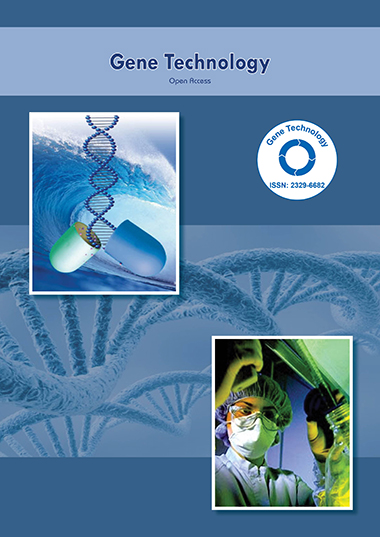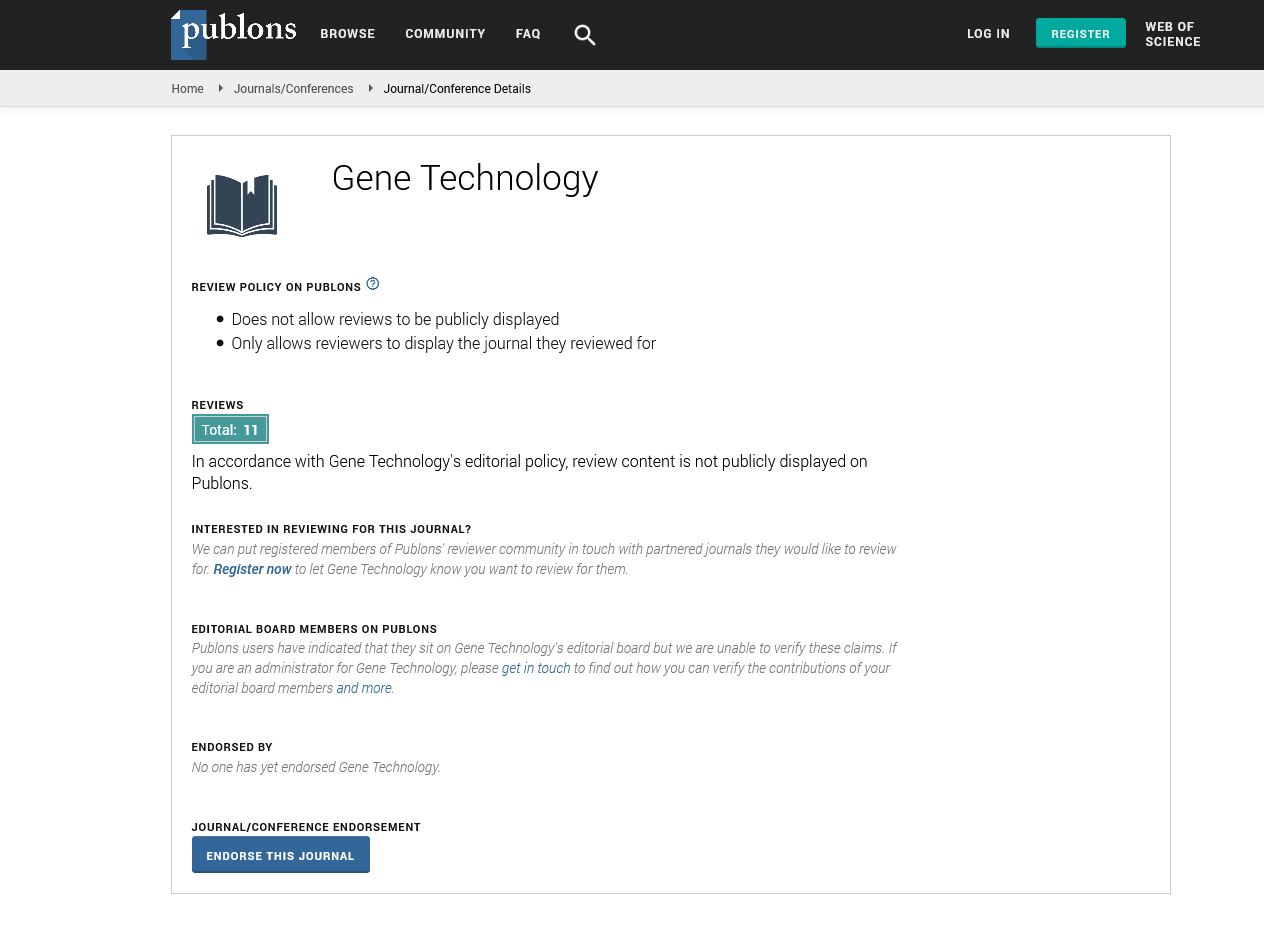Indexed In
- Academic Keys
- ResearchBible
- CiteFactor
- Access to Global Online Research in Agriculture (AGORA)
- RefSeek
- Hamdard University
- EBSCO A-Z
- OCLC- WorldCat
- Publons
- Euro Pub
- Google Scholar
Useful Links
Share This Page
Journal Flyer

Open Access Journals
- Agri and Aquaculture
- Biochemistry
- Bioinformatics & Systems Biology
- Business & Management
- Chemistry
- Clinical Sciences
- Engineering
- Food & Nutrition
- General Science
- Genetics & Molecular Biology
- Immunology & Microbiology
- Medical Sciences
- Neuroscience & Psychology
- Nursing & Health Care
- Pharmaceutical Sciences
Commentary - (2025) Volume 14, Issue 1
CRISPR Advances in the Evolution and Application of Resistant Genes
Xiaxia Man*Received: 01-Mar-2025, Manuscript No. RDT-25-29028; Editor assigned: 03-Mar-2025, Pre QC No. RDT-25-29028 (PQ); Reviewed: 17-Mar-2025, QC No. RDT-25-29028; Revised: 24-Mar-2025, Manuscript No. RDT-25-29028 (R); Published: 31-Mar-2025, DOI: 10.35248/2329-6682.25.14.310
Description
The study of resistant genes has become increasingly significant in the field of gene technology, particularly in agriculture and medical biotechnology. These genes play a critical role in enabling organisms—especially plants, bacteria, and some pathogens—to withstand adverse conditions, including pathogenic attacks, chemical exposure, or antibiotic treatment. Understanding the genetic basis of resistance mechanisms not only enhances crop protection strategies but also addresses the growing concern of antibiotic resistance in human health.
In plants, Resistance (R) genes encode proteins that recognize specific Avirulence (Avr) factors produced by pathogens. This recognition typically activates a cascade of immune responses, including hypersensitive responses and systemic acquired resistance. R genes often belong to the Nucleotide-Binding Site-Leucine-Rich Repeat (NBS-LRR) class, which is responsible for intracellular recognition of pathogen-derived molecules. Through molecular breeding or genetic engineering, these genes can be introgressed into susceptible plant varieties, enhancing their resistance profiles against diseases like rust, blight, or wilt.
Modern genome-editing tools such as CRISPR/Cas9 have revolutionized the manipulation of resistant genes. By introducing targeted mutations or enhancing expression of specific R genes, researchers can develop crop lines with improved disease resistance. For example, CRISPR-based deletion of susceptibility genes in rice has conferred resistance to bacterial blight caused by Xanthomonas oryzae. Additionally, pyramiding multiple R genes into a single genotype is a strategy used to extend durability of resistance, minimizing the pathogen’s ability to overcome a single defense mechanism.
On the microbial side, resistant genes confer survival advantages to bacteria and fungi when exposed to antimicrobial agents. Antibiotic Resistance Genes (ARGs) are commonly found on plasmids, which facilitates horizontal gene transfer among microbial populations. Mechanisms of antibiotic resistance include enzymatic degradation of antibiotics (e.g., β-lactamases), alteration of drug targets (e.g., mutations in ribosomal proteins).
The spread of ARGs in both clinical and environmental settings is alarming. Overuse and misuse of antibiotics in medicine and livestock farming have accelerated the evolution and dissemination of resistance. Genomic surveillance and metagenomics are now key approaches in identifying resistant gene profiles within microbial communities. These methods allow the detection of resistance reservoirs and help in mapping the potential transmission pathways of resistant pathogens.
In cancer research, certain resistant genes are associated with chemoresistance. Tumors may express efflux pumps, detoxifying enzymes, or anti-apoptotic proteins that render conventional chemotherapy ineffective. Identifying genetic signatures of drug-resistant cancers has become a priority in developing personalized therapeutic strategies. Gene expression profiling and next-generation sequencing enable the detection of resistance-associated variants, guiding the choice of alternative treatments or targeted therapies.
Another promising application of resistant gene technology lies in developing insect- or herbicide-resistant Genetically Modified (GM) crops. Transgenic plants expressing Bt toxin genes derived from Bacillus thuringiensis are resistant to specific insect pests, reducing the need for chemical pesticides. Similarly, crops engineered with glyphosate-resistant genes allow for effective weed control while minimizing crop damage.
In conclusion, resistant genes serve as a cornerstone of defense across biological systems, offering critical insights into disease management, biotechnology, and evolutionary biology. Advances in gene editing and genomics continue to unlock new possibilities for harnessing and regulating these genes. Future research should focus on balancing resistance development with sustainable practices, ensuring that resistance remains an asset rather than a liability in our ongoing quest to safeguard health and agriculture.
Citation: Man X (2025). CRISPR Advances in the Evolution and Application of Resistant Genes. Gene Technol. 14:310.
Copyright: © 2025 Man X, et al. This is an open-access article distributed under the terms of the Creative Commons Attribution License, which permits unrestricted use, distribution, and reproduction in any medium, provided the original author and source are credited.

